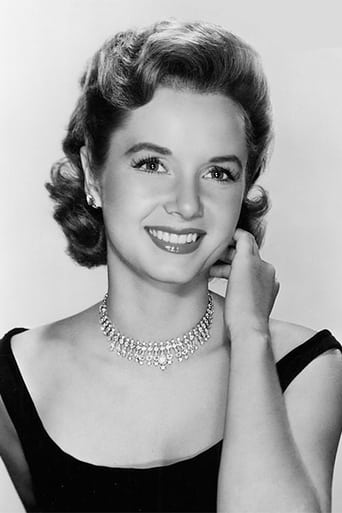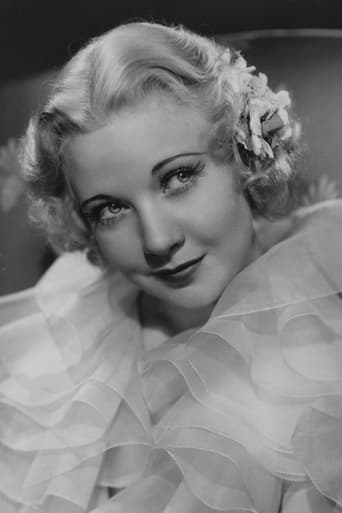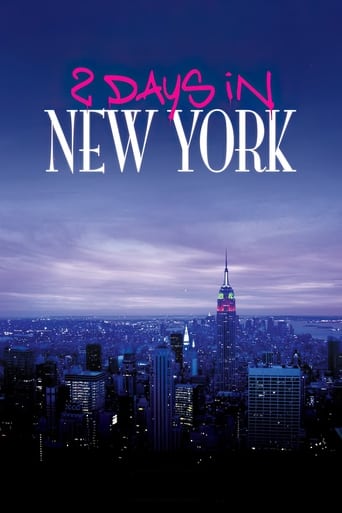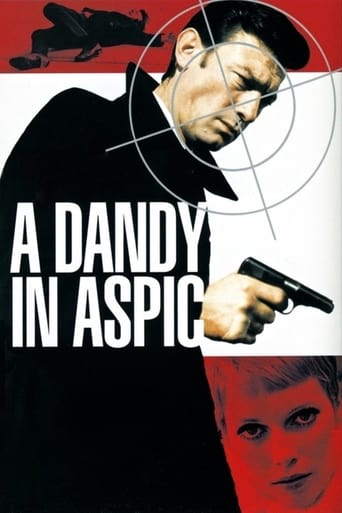
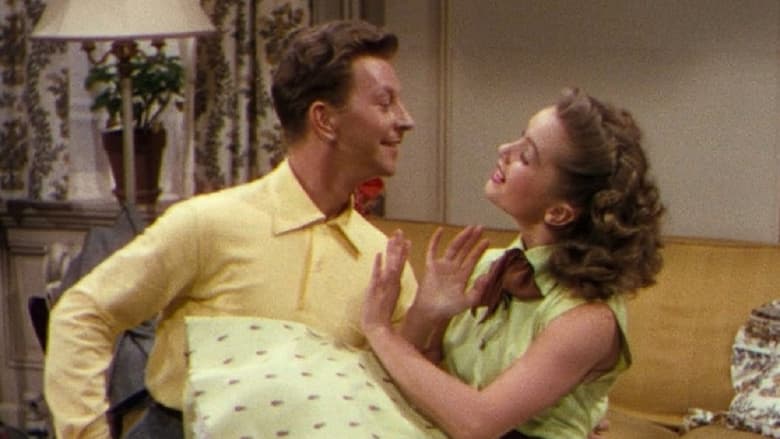
I Love Melvin (1953)
Melvin Hoover, a budding photographer for Look magazine, accidentally bumps into a young actress named Judy LeRoy in the park. They start to talk and Melvin soon offers to do a photo spread of her. His boss, however, has no intention of using the photos. Melvin wants to marry Judy, but her father would rather she marry dull and dependable Harry Black. As a last resort, Melvin promises to get Judy's photo on the cover of the next issue of Look, a task easier said than done.
Watch Trailer
Cast
Similar titles
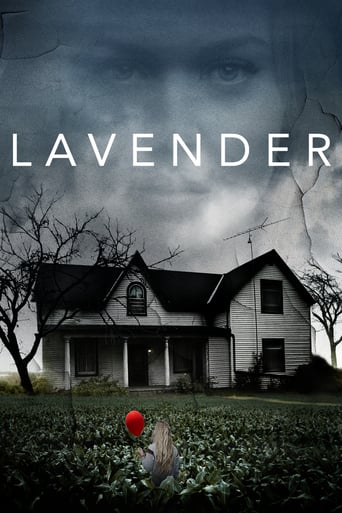
Reviews
Takes itself way too seriously
Good movie but grossly overrated
It’s fine. It's literally the definition of a fine movie. You’ve seen it before, you know every beat and outcome before the characters even do. Only question is how much escapism you’re looking for.
There's a more than satisfactory amount of boom-boom in the movie's trim running time.
The sheer energy and delight of Debbie Reynolds and Don O'Connor in their frequent musical/comedy numbers in a rather short (76 min.)film is best summed up in the best remembered song by the film composer-lyricist team of Josef Myrow and Mack Gordon:"You Make Me Feel So Young".Unfortunately, this song, previously composed for another film, was not included. Nonetheless, this team comes up with some quite serviceable songs that express the feelings of the duo or are appropriate for their stage productions. Debbie is in 3 elaborate song and dance or comedy routines, while O'Connor gets 2 solo dance/comedy routines. They only have one song and dance number together, but it's a very energetic 'getting to know you' one, where they bound and bounce all over the furniture in her family's living room. Much reminds me of the "How About You" performance by Mickey and Judy in "Babes on Broadway"(1940). There is also a very clever early scene where Debbie and O'Connor are walking/frolicking on opposite sides of a Manhatten Central Park hedge row, singing about what their ideal mate will be like, before crashing into each other at the end of the hedge row. This hedge will show up again in the final comedic scene of the film. In addition, pint-sized Noreen Corcoran, as Debbie's little sister, Clarabelle, sings "Life Has Its Funny Little Ups and Downs" to O'Connor to cheer him up, after being hold he's not welcome to share dinner with Debbie's family.Debbie's character,Judy, has two goals:find Mr. Right, and to become a big Hollywood star. She discovers that O'Connor's character, Melvin, may be the answer to both her desires, if he can somehow convince the editor of Look magazine to feature her on their cover, and if she can convince her father to back Melvin as her fiancé, instead of handsome, established, but rather dull Harry Flack. These are both very formidable obstacles for Melvin. But, where there's a will, there's usually a way, even if it involves a bit of trickery, deception, embarrassment, and luck. I leave the details for you to see. Judy has two dream sequences, one before and one after she meets Melvin, where she is a show starlet. Both are quite entertaining. In the first, she sings "A Lady Loves", in a routine tailor-made for Marilyn Monroe, mobbed by a bevy of press photographers and men in cloaks and top hats. In the second, she is clearly a big Hollywood star, initially in imitation of Marilyn Monroe(I assume), then as herself, dancing with 3 men with Fred Astaire masks and 3 men with Gene Kelly masks.She even wins the Academy Award, with a giant statue. Judy also has a spectacular non-dream role as a human football, in a Manhatten Crown Theater show: "Quarterback Kelly", which includes two alternatively dancing/playing teams, which toss, carry and kick her around. Must have been some trick photography involved when she goes tumbling through the goalposts!..There is also an outtake on the current DVD release of a reprise of "A Lady Loves", that I wish they had kept in. It appears to be part of Judy's second dream sequence, with O'Connor as the cinematographer and sometimes dance partner. Certainly, excessive film lengthening wasn't an excuse for deletion!O'Connor scooped Gene Kelly by about 2 years in his tap dance on roller skates scene, which was part of his overall roller skating act in an elevated gazebo, for the entertainment of little Clarabelle, whose skates he borrowed. Woudn't think her skates would fit him! Reportedly, skates with locked wheels were used for his tap dancing segment, and a string(sometimes slightly visible at slow motion)was tied around his waist to keep him from flying off the gazebo during his speed skating segment, until it was time to land in the shrubbery. Kelly's more extensive and much better known roller skating act was performed in "It's Always Fair Weather", which was done very much like his classic "Singing in the Rain" act, on a crowded street and sidewalk. Actually, the first film roller skating dance, including some tap dancing, I'm aware of was done by the duo of Fred and Ginger, in "Shall We Dance", way back in 1937!In O'Connor's second solo act, he really goes into his hyperactive mode, first singing and dancing to " I Wanna Wander", before going through a period of frantically changing from one ethnic costume to another, for just a few seconds each. After falling off a Swiss mountain, he becomes a Hollywood version of a cannibal, then played various characters in a bizarre Sherlock Holmes-like skit. Parts were good but, overall,it would have been more entertaining if he had stuck to fewer characters and exploited their potential more.Also, the addition of another person, maybe Debbie, in some parts,would have been a plus. My favorite was his transformation, while hidden in a giant stew cauldron, from a cannibal into an over-the-top version of Carmen Miranda.Honorable mention should be made of Jim Backus, who played Melvin's ever needling boss, to Richard Anderson, for his thankless role as Melvin's romantic competition for Judy, to Allyn Joslyn, as Judy's one-step-behind-reality father, to Una Merkel, as Judy's mother, and again to Noreen Corcoran, who added much more than her pint size to the enjoyment of the film. I dare you to watch this film just after "Singing in the Rain" and tell me which was more enjoyable! About equal?
Talk about an energy crisis! None of that here. Reynolds and O'Connor generate enough sheer bounce to light up a city. This is Reynolds at her most likable, a chorus girl with ambitions beyond being a human football. It's also O'Connor at his nimble toed best. They're an ideal pairing. There's not much plot, but when did a musical need much story. Melvin loves Judy, Judy loves Melvin, but first poor Mel must get past cranky Dad and then past rival Harry Flack. Good thing he's a photographer for Look magazine. Okay, if you remember Look and Life, you probably saw the movie in a theatre. The year is 1953, the Korean War is over, Ike's in the White House, and the economy has taken off. It's the 50's of Ozzie and Harriet, and happily, that carefree spirit percolates throughout the movie's candy box colors. It's also the kind of movie dream factory MGM specialized in, a chance for their younger performers to show their stuff. But catch oldster Jim Backus as O'Connor's boss. His array of comedic expressions are a real hoot. The music may be forgettable, but the dancing is infectious. Thanks to the kids' charm and sparkle, plus fast-moving direction, the movie's an unheralded little gem. Then too, if you like this musical, catch up with The Affairs of Dobie Gillis (1953). It's with Reynolds and Bobby Van, and is just as sparkling as this companion sleeper.
It is a commonplace that the 1950s was the Golden Age of the Hollywood musical, especially the MGM model. This not only means a profusion of classics such as 'An American in Paris', 'Singin' in the Rain', 'the Band Wagon' and 'Gigi', but also a string of second-order films of exceptional quality. 'I love Melvin' is one of these. Compared to the first films I mentioned, it is definitely an inferior product - Don Weis has neither the visual flourish or emotional realism of a Minnelli or a Donen; the stars, Donald O'Conner and Debbie Reynolds, pleasant verging on irritating, are not of the first rank, and seem exposed without their most-famous co-star, Gene Kelly, while the supporting cast is generally unmemorable; the songs are mediocre and the choreography routine; the sets are clever and pretty, but do not reveal any great truths about characters' feelings. I mention all this to show the difference between a great MGM musical and a good one. 'Melvin' is a good musical, but a very entertaining film, especially in the era of Kazan and 'Marty'.'Melvin' boasts two knockout numbers (well, three, but the amazing football dance is more clever than exhilirating). The film opens with a beautiful film-within-a-film sequence, as a crew wait for Julie LeRoy to perform her musical number. This is basically a sexless variation on 'Diamonds are a Girl's Best Friend', but the gorgeous bright colours, Debbie's flaming dress against a cool yellow background, and inventive-within-its-limits choreography, are lovely.The second elaborate sequence involves Melvin mooning about an empty photographers' set, also yellow, surreptitiously sticking up pictures of Judy in the hope that she'll be noticed and put on the cover. He goes through a variety of routines and costume changes which reveal the transfigurative effect his love for Julie has on him. The set is beautiful to look at, but vacuous in emotional terms; Weis' direction is too grounded, his camera movements laboriously signalled, rather than the urges of an overspilling heart; O'Conner's personality has become considerably less charming since 'Make 'Em Laugh', but it's all good stuff.These two numbers are crucially connected in that they are both fantasy sequences, dreamed by characters with huge ambitions, but hemmed in by economic circumstances. This treatment of the working class is rare in the Hollywood musical, rare in that, unlike 'West Side Story', class isn't a suffocating trauma, but a very real barrier to prosperity and happiness. Judy's change of name from Schneider to leRoy maybe simply a desire for the exotic, but also suggests a reaction to an anti-Semitism very prominent in the American society of the 1950s. it would be stretching things to compare 'Melvin' to a full-blown critique of the family and conformist AMerica such as 'Bigger than life' or 'Written on the wind', but the film doesn't shy away from tensions, such as the generational gap between a mother who meekly serves her husband, and a daughter determined to earn a career for herself; or an employment situation where workers are expected to take any old rubbish from their employers (plus ca change...). It is significant that Melvin should have no family background - this freedom is surely part of his attraction for Judy. They are connected by a different bond, the symmetry of the plot and mise-en-scene, which is continually playing them off one another, always reuniting them, like lines of a triangle. This structural artifice complicates an apparently simple dichotomy between authenticity/nature and capitalism/consumerism/fakery - Judy and Melvin meet in a park and eventually reunite there; their love is endangered by Melvin creating a fake magazine for her. His job as a photographers' assistant, his taking 'thousands' of pictures of Judy, his pretending to be someone else, create a world where identity is unstable, perhaps a riposte to a society where everybody is expected to be the same. At any rate, that park is pure artifice, the yellow and green of the hedge matched by the dresses of its users. In such a world fantasy (and the whole climax is possibly Judy's concussed delusion) is the only suppository for individuality and imagination.
This movie really lets you know that back in the 50's, they really knew how to make an excellent musical! The cast includes Donald O'Connor as Melvin, a small-time photographer working for "Look" Magazine. He turns his attention and camera to Judy LeRoy, a beautiful dancer who dreams of making it big one day, played by Debbie Reynolds. The songs in this film are wonderfully written and performed, including a very charming outdoor song and dance routine performed by O'Connor and the film's youngest actress, 9 year old Noreen Corcoran, who brightens the many scenes she's in, playing Judy's sister, Clarabelle, who seems to like to be involved in everything. (The songs have very clever lyrics as well!) Melvin seeks to win the hand of Judy, but her usual date, Harry Black (Richard Anderson), who's pretty much a square, is about to pop the question to the delight of Judy's dad, while her dad dislikes Melvin. O'Connnor and Reynolds are brilliant. Jim Backus adds some laughs also. The whole cast comes together to make this a delightful film, which is yet another great one that was overlooked by video & DVD companies! A MUST SEE! Try your favorite movie channels.

